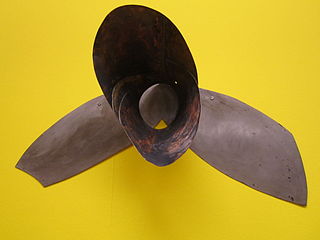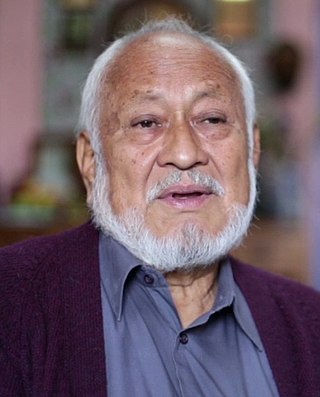Lynne Cooke is an Australian-born art scholar. Since August 2014 she has been the Senior Curator, Special Projects in Modern Art, at the National Gallery of Art, Washington, DC.

Alison Mary Wilding OBE, RA is an English artist noted for her multimedia abstract sculptures. Wilding's work has been displayed in galleries internationally.
Germán Cueto was a Mexican artist. He was part of the initial wave of artistic activity following the Mexican Revolution. However, his stay in Europe from 1927 to 1932 moved him into more European and more abstract work, especially sculpture. While he had a number of exhibitions in Mexico during his life including a retrospective at the Museo de Arte Moderno in 1965, he did not have the kind of success that many of his contemporaries did as he did not follow the then dominant themes or styles of Mexican muralism movement. His work was considered to be avant-garde and is considered to be the first Mexican abstract artist, creating masks and sculptures of wood, wire, plastic, sheet metal, ceramic, electrical wire and other materials, traditional and non-traditional.

Helen "Elena" Escobedo was a Mexican sculptor and installation artist who has had work displayed all over the world from Mexico, Latin America, the United States, and Canada to the United Kingdom, (Germany), as well Israel and New Zealand.

Harry Abend, OFM was a Polish-born Venezuelan sculptor and architect. With his parents, Polish Jews from Jarosław, he left Poland and immigrated to Venezuela at the age of 11 in 1948. Abend embarked on his sculpture practice in 1958 under the guidance of Miguel Arroyo while also studying architecture at the Universidad Central de Venezuela. In 1963, at the age of 26, Abend received the National Sculpture Prize of Venezuela for his work "Forma" 1961. In 1964, he participated in a three-month workshop led by British sculptor Kenneth Armitage. In 1976 Abend moved to London where he continued developing his work and exhibited in galleries such as the Roundhouse Gallery and the Hayward Gallery. Around this time Abend began to receive commissions to stage interventions in urban and architectural environments, such as the cement mural on the façade of the Teatro Teresa Carreño, and the interior design of the Sala Plenaria in the east tower of Parque Central, both in Caracas. A selection of his solo shows include Esculturas, Museo de Arte Moderno, Río de Janeiro (1968); three exhibitions at Sala Mendoza, Caracas ; Electrum Gallery, London (1977); Saint James Piccadilly Festival, London (1981); a retrospective at the Museo de Arte Moderno Jesús Soto, Ciudad Bolívar (2002); Museo de Arte Acarigua Araure, Acarigua (2003); Museo Kern Unión Israelita de Caracas (2012); Galería GBG ARTS, Caracas and Henrique Faria, New York. He lived and worked in Caracas.

Álvaro Zardoni is a Mexican sculptor and architect of Italian descent who has been a member of the Salón de la Plástica Mexicana since 2006. Although he studied painting and drawing in the 1970s and 1980s, he is a self-taught sculptor who began showing his work regularly in 2000. Since then, he has had over thirty individual exhibitions, twenty private showings and his work has appeared in over 100 collective exhibitions. He specializes in small bronze sculptures which focus on the human face, which is almost always male, expressing something emotional and/or psychological. Objects, often common, are added to the piece to reinforce the main theme of the work, for example the addition of coins on the foreheads of pieces of the Cyclops collection.

Abel Ramírez Águilar was a Mexican sculptor who won many prizes not only for traditional pieces in wood, stone and metal, but also for ice and snow sculptures in the United States, Canada, Japan and Europe. He was trained as a sculptor in Mexico and the Netherlands and has exhibited his work individually and collectively since the 1960s. He discovered snow and ice sculpting while visiting Quebec in the 1980s, first experiencing snow in his forties. The challenge intrigued him and he began sculpting this medium as an amateur. He began sculpting ice and snow professionally when he was entered in the competition associated with the 1992 Winter Olympic Games without his knowledge. Having practiced beforehand at an ice factory in Mexico City, he won the gold medal for this event, leading to invitations to other competitions for over twenty years. Ramírez lived in Mexico City.
Gustavo Arias Murueta was a Mexican painter, sculptor and poet, a member of the Salón de la Plástica Mexicana best known for his work in drawing, graphic arts and oil painting. He originally studied architecture at the Universidad Nacional Autónoma de México where he met artists such as Rufino Tamayo, David Alfaro Siqueiros and José Clemente Orozco. In the 1950s, he began to produce artworks, with his first exhibition in 1961. From then until his death he had a career as an artist with individual and collective exhibitions in both Mexico and abroad. While his work had been heavily influenced by Orozco, he was considered part of the Generación de la Ruptura movement.
Olga Dondé was a Mexican artist involved in various fields but best known her still life pieces. She was a self-taught painter, who worked for two years until she decided to enter works in a show in 1968. From then she had about 100 showings of her work, including more than forty individual exhibitions in Mexico, the United States, South Americana and Europe. She also founded artistic organizations, an art gallery and a publishing house. Dondé’s work was recognized by admission in the Salón de la Plástica Mexicana, among other honors and her work continues to be shown and honored after her death.

Heriberto Juárez was a self-taught Mexican sculptor, known for his depictions of women and animals, especially bulls. As a youth he wanted to be a bullfighter but gave this up when he found he could sell figures he made. While never formally trained, he had over seventy individual exhibitions of his work in Mexico and the United States and his work can be found in prominent public and private collections.
Berndnaut Smilde is a Dutch visual artist.
Nancy Durrant is a British journalist. Since February 2020 she has been the Arts Editor of the Evening Standard in London; previously she worked as art critic and arts commissioning editor for The Times. She has presented on the BBC Culture Show, contributed to Channel 4 News, Sky News, The Today Programme, Times Radio and LBC, and writes, programmes and presents Cultural Capital, a ten-minute weekly culture programme on the Evening Standard's YouTube channel. She has been a judge for the Catlin Art Prize and Sky Arts Ignition Futures Fund. She is referenced in the Rose Wylie painting PV Windows & Floorboards 2011, featured in the film by Adolfo Doring. A terracotta portrait by Jon Edgar was exhibited at Yorkshire Sculpture Park in 2013 as part of the Sculpture Series Heads exhibition. The sitting was documented in The Times.

Ronchini Gallery is a contemporary art gallery founded by Lorenzo Ronchini in Umbria, Italy, in 1992. Artists exhibited at the gallery include: Jacob Hashimoto, Will Cotton, Conrad Marca-Relli, Berndnaut Smilde, Sean Lynch (artist), Paul Jenkins (painter), Mario Schifano, Alexander Calder, Alighiero Boetti, Rebecca Ward, and Paolo Serra. Originally heardquartered in Terni, the gallery moved to 22 Dering Street, Mayfair, London, in February 2012. The inaugural exhibition was titled Italian Beauty, and featured works by Giulio Paolini, Domenico Bianchi and Giò Ponti. The program focuses on international contemporary art.
Miguel Ángel Rojas is a Colombian conceptual artist born in Bogotá in 1946. His work includes drawing, painting, photography, installations and video and is often related to the sexuality, the marginal culture, the violence and problems involved with drug consumption and production.
Maria Lynch is a Brazilian artist.

Perla Krauze Kleinbort is a Mexican sculptor, painter and visual artist. She has a Masters in Visual Art from Chelsea College of Art, in London. Her work is important public collections such as the Museo de Arte Moderno in Mexico City, the Museo de Arte Contemporaneo/ Museum of Contemporary Art in Oaxaca City, Museo de Arte Carrillo Gil/ Carrillo Gil Art Museum, Museo de la Secretaría de Hacienda y Crédito Público and the Scottsdale Museum of Contemporary Art in Arizona.
Teresa Serrano (1936) is a Mexican painter, sculptor, and filmmaker. She gained recognition through her work in filmmaking in the mid to late 1990s. Her main focus has been "to make forceful commentaries on power relationships, sexism, and violence against women".
Lorraine Garcia-Nakata is an American artist who works with various mediums including pastel, charcoal, ceramics, printmaking, installation, sculpture, and paint. Her work surrounds themes of the daily life, portraiture, and realism and is known for her large scale artworks. She is a member of the Royal Chicano Air Force (RCAF) artist collective since 1974.
Elba Damast was a Venezuelan artist.

Karina Aguilera Skvirsky is a multidisciplinary artist based in New York, New York. Her work is held in the permanent collections of the Brooklyn Museum, the New York Public Library, the Art Institute of Chicago, and the Whitney Museum, among others. Working across video, performance, and photography, Aguilera Skvirsky addresses themes of migration, colonization, Latin American identity, and family history. Aguilera Skvirsky is best known for her performance video The Perilous Journey of María Rosa Palacios (2019).









